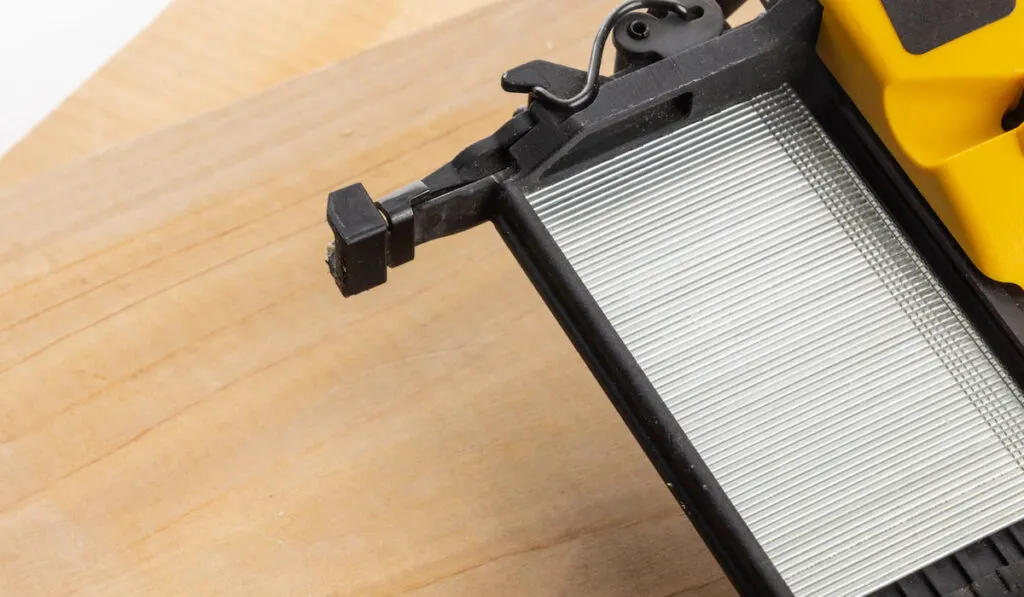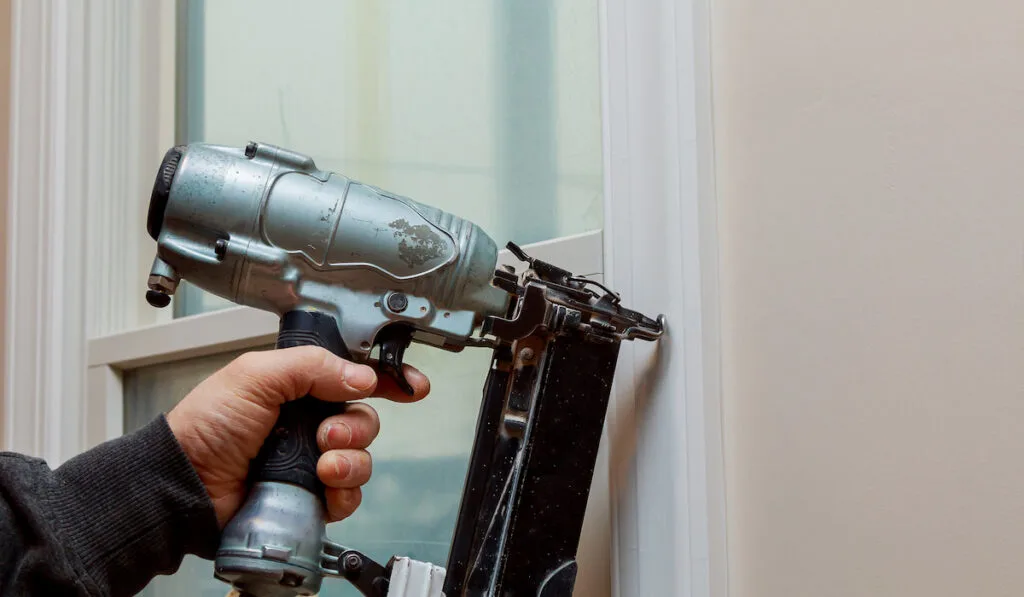*This post may have affiliate links, which means I may receive commissions if you choose to purchase through links I provide (at no extra cost to you). As an Amazon Associate, I earn from qualifying purchases. Please read my disclaimer for additional details.
So, you plan to do some construction work, and in preparation, you are making a list of tools you will need. Then you get to the point where you have to add a nailer to the list, and you think brad nailer or finish nailer?
After thinking this, it is perfectly normal to ask yourself if there is a difference between both types of nailers. So, let’s see if they are really different.
What is the difference between a finish nailer and a brad nailer?
There are a couple of differences between both types of nailers. One of the foremost distinctions is the type of nails they can be used on. Brad nailers are used on 18-gauge nails or brad nails, while finish nailers are used on 15-gauge and 16-gauge nails.

There are many other differences between these tools. Trust us to give you more info as you read the rest of this article.
Table of Contents
Differences Between Brad Nailers and Finish Nailers
On the outside, finish nailers and brad nailers are almost of the same size. So one might think there is no difference between them. But as you read the rest of this article, you will find that they have different uses.
The following are some of the differences between brad nailers and finish nailers:
Type of Nails They Use
As the name says, brad nailers use brad nails, which are 18-gauge nails. Brad nails are pretty thin. Thus, they are suited for delicate or lightweight trims.
On the other hand, finish nailers use thicker nails. They are typically used on 16-gauge and 15-gauge nails. So, they are suitable for heavier fixes like woodwork and carpentry jobs.

When They Are Used
Since brad nailers used brads, their preferred applications differ from those of finish nailers. Brads are technically not nails. Besides, they are even smaller than regular nails, and for this reason, they are used for delicate trims and thin woods.
Conversely, finish nailers cannot be used for delicate trims or thin woods.
Finish nailers use thicker nails – say 15 or 16-gauge nails. So if you try to use them on delicate woods or trims, they just might cause them to split.
Finish nailers are perfect for heavy and thick trims, making them relatively more versatile. This also makes them excellent for woodwork and carpentry.
When working with a brad nail, avoid hitting it with a hammer if the nailer does not fully push it through.
Since brads are relatively thin, the impact of a hammer will bend them easily. A better alternative to hammering would be to remove the brad nail and try nailing again with the brad nailer.
Also, when working in corners, brad nailers are preferred. They have lower power and are less likely to cause damages than finish nailers.

Hole Size
The hole size these two types of nailer leave on materials differ. As expected, the one that uses thicker nails (finish nailer) leaves larger holes. The hole size left by a finish nailer can be up to 0.072 inches. The consequence of this is that you may have to fill the puncture with some putty.
Brad nailers, on the other hand, leave smaller holes since they use brad nails. The hole size they make is typically around 0.0475 inches.
More times than not, they leave unnoticeable holes. But in cases where the trim or wood is extra delicate, you may have to fill the hole with some putty albeit, only a little putty.
Holding Power
The finish nailer has a higher holding power than brad nailers. This difference also drives the differing applications of both types of nailers.
Finish nailers can attach heavy materials like baseboards, cabinetry, and crown moldings to the wall quite well. You will not have to bother too much about the attachment detaching from the wall later on.
Conversely, brad nailers are unsuitable for heavy wood. Their holding power is not as much as that of finish nailers. Hence, they are more suitable for lightweight moldings and boards.
Of course, knowing that brads are relatively thin, minimal power will do when driving them in. Using higher power may just bend or break the brad nail.
If you try to use brad nailers in place of finish nailers, the nail may not hold for long. For instance, if you attach a heavy board to drywall with a brad nailer, the board will come crashing down in no time.
| Brad Nailer | Finish Nailer | |
| Holding Power | Relatively less holding power | Offers more holding power and is suitable for relatively heavier objects |
| Nail Type | Uses brad nails (18-gauge) | Uses 15-gauge and 16-gauge nails. |
| Hole Size | Leaves holes with diameters of up to 0.0475 inches | Leaves holes with diameters of 0.0625-0.072 inches |
| Uses | It is used on lightweight trims and woods. It is also preferred for use in corners | It is used for heavier materials like baseboards and plywood over 0.5 inches thick. |
Which of Them Should I Use?
At this point, you already know you cannot use brad nailers and finish nailers interchangeably. But how do you know the best option to go for?
Well, the thickness and weight of the material determine which of them to use. In general, brad nailers will handle thinner, lighter wood, while finish nailers are best for heavy materials.
If you are thinking of getting either of them, the finish nailer might be a good choice. It has more applications.
Summary
As you make that list, your choice between brad nailers and finish nailers should depend on the material you intend to work on. Finish nailers offer more power between the two, so it is suited for more intensive nailing.
However, it is not all-capable. Finish nailers and brad nailers are not as powerful as many other nailers, such as framing nailers. In some cases, you may have to opt for a nailer higher than them.
